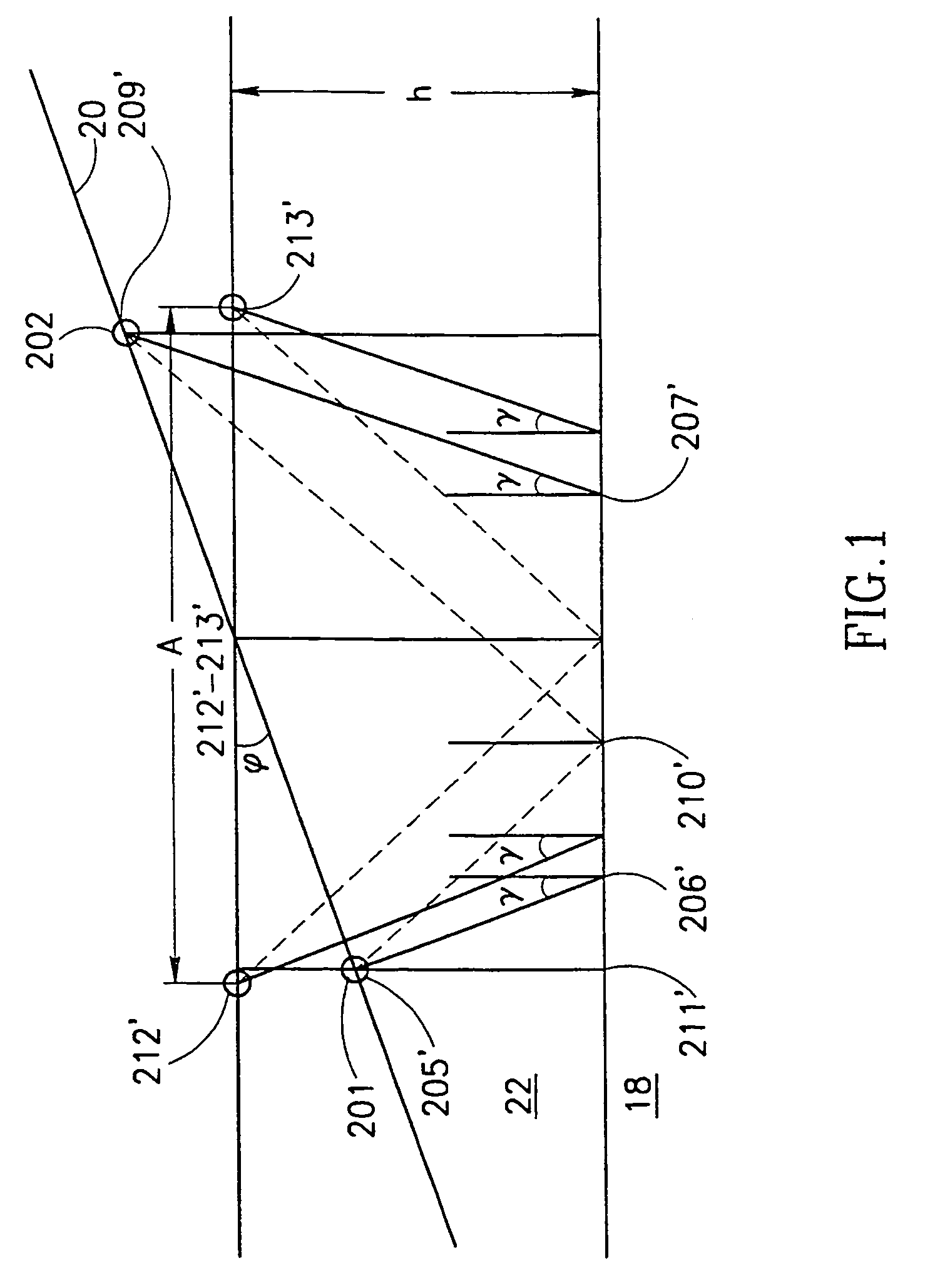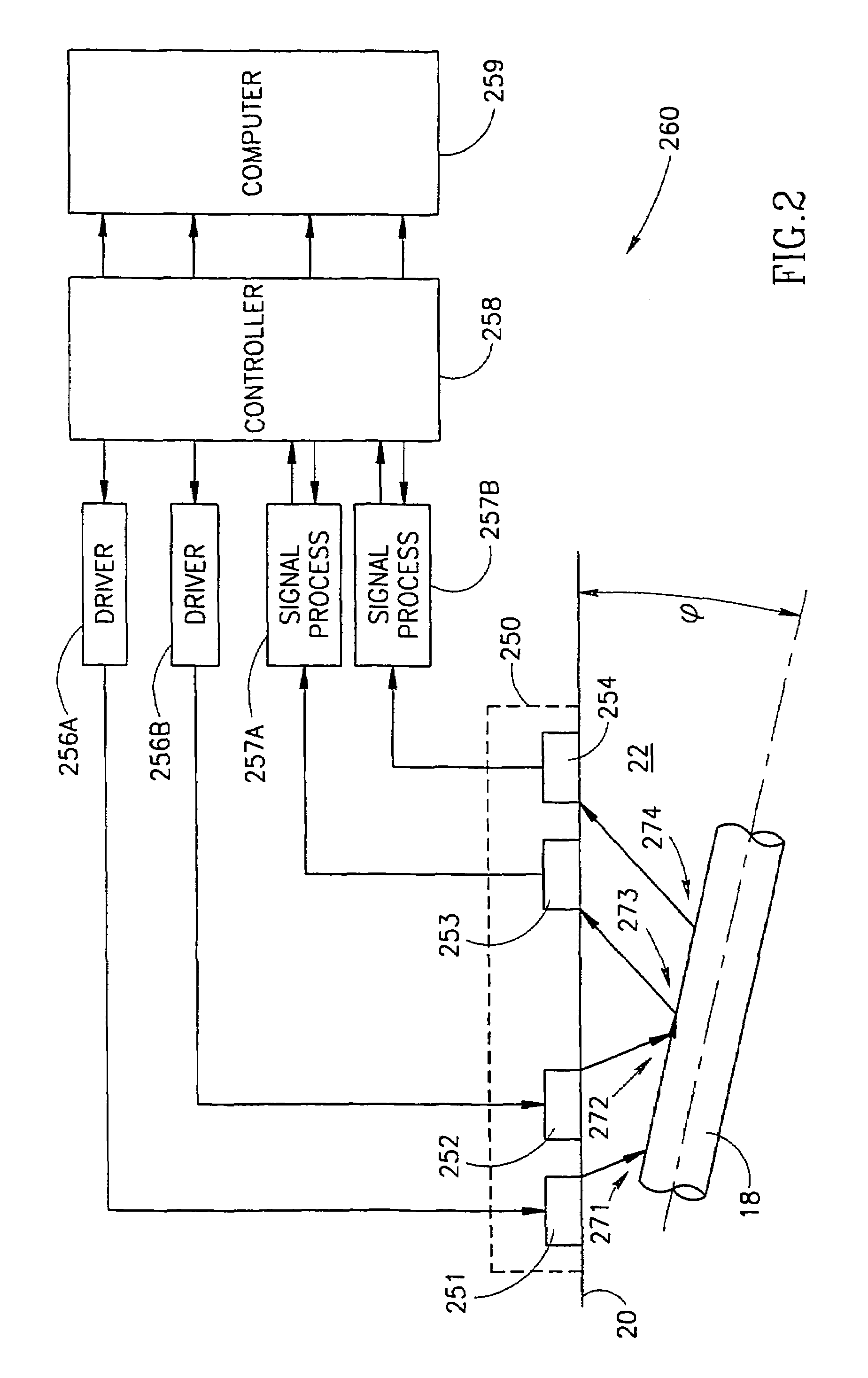Determination of acoustic velocity in bone
a technology of acoustic velocity and bone, applied in the field of non-invasive measurement, can solve the problems of inability to ignore soft tissue, inability to calculate acoustic bone velocity, and inability to accurately measure the acoustic bone velocity, etc., and achieve the effect of high spatial resolution
- Summary
- Abstract
- Description
- Claims
- Application Information
AI Technical Summary
Benefits of technology
Problems solved by technology
Method used
Image
Examples
Embodiment Construction
[0134]FIG. 1 illustrates a simplified situation in which an acoustic bone velocity of a bone 18 is to be measured through an intervening soft tissue layer 22. An ultrasonic wave is generated by an ultrasonic element 201 (a transmitter) and detected by an ultrasonic element 202 (a receiver). There are many paths that the ultrasonic wave can and does take between the two ultrasonic elements. However, each path has different attributes. In particular, one path is the fastest path. In a preferred embodiment of the invention, the fastest path includes a bone segment.
[0135]φ is defined as the angle between the line connecting the two ultrasonic elements and a line parallel to the surface of bone 18. h is defined as the average distance between the ultrasonic elements and bone 18. A skin 20, which defines the surface of soft tissue 22 is usually flush with probe 250. Considering the configuration in which φ≠0, elements 201 and 202 are situated at positions 205′ and 209′ respectively, the t...
PUM
 Login to View More
Login to View More Abstract
Description
Claims
Application Information
 Login to View More
Login to View More - R&D
- Intellectual Property
- Life Sciences
- Materials
- Tech Scout
- Unparalleled Data Quality
- Higher Quality Content
- 60% Fewer Hallucinations
Browse by: Latest US Patents, China's latest patents, Technical Efficacy Thesaurus, Application Domain, Technology Topic, Popular Technical Reports.
© 2025 PatSnap. All rights reserved.Legal|Privacy policy|Modern Slavery Act Transparency Statement|Sitemap|About US| Contact US: help@patsnap.com



